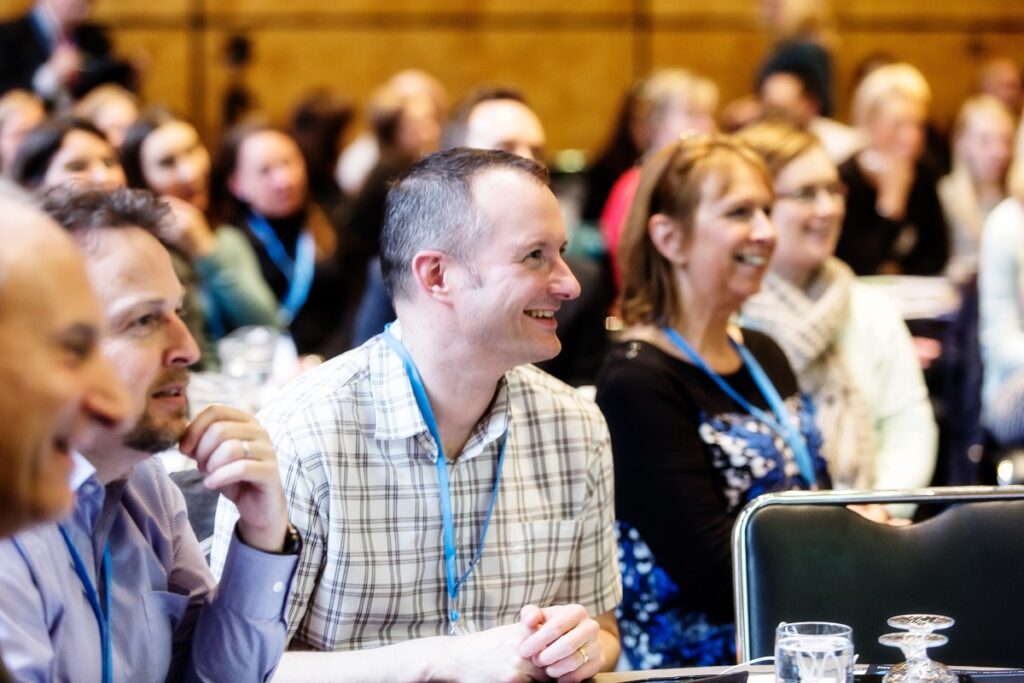Not-for-profit (otherwise known as Third Sector) organisations have their own specific set of challenges and needs when it comes to L&D. In this series, we will hear from several charities and organisations on what their learning priorities are for the coming year, what their pain points are, and what they've been finding effective in the development of their staff.
Martin Baker is Chief Executive of both the Charity Learning Consortium – which provides eLearning to 500,000+ third sector staff and volunteers – and GivebackUK, a not for profit which has created a free video learning library for the third sector.
Martin has contributed several article to TrainingZone over the years, namely on the subjects of engaging staff, and busting the myths surrounding 70:20:10.
We caught up with him to find out his plans for the coming months, and the current challenges he's trying to overcome.
What are your priorities for the next year?
At the Consortium, we’ve been working hard behind the scenes to improve the functionality, look and feel of our Moodle platform, to greatly enhance the user experience, and also make life easier for the L&D practitioners administering it.
There have been countless unseen hours that have gone into this but the feedback has been excellent, which makes everything worthwhile. We have also recently launched GivebackUK – this is still very much a work in progress, but it’s set to be the most fantastic free resource for charity staff and volunteers, a potential audience of some 13 million people in the UK.
What are your biggest challenges when developing staff?
The number one challenge for third sector organisations is always resources – by which I mean time, money and staff. There are at least 160,000 charities in the UK (estimates differ widely) but only the minority have an L&D team, while smaller charities may have no-one directly responsible for L&D.

They may also have second hand donated hardware and various different versions of software. Throw into that mix the fact that charities have staff that may not have a desk and computer – in care situations, or retail for example – and you start to get an idea of what a challenging environment for L&D it is.
I’m a firm believer in the old adage that ‘necessity is the mother of invention’
I’m a firm believer in the old adage that ‘necessity is the mother of invention’ and am constantly impressed with what our members achieve. Lack of budget, time and staff can make things incredibly tough, but they’re not insurmountable barriers, and collaborating to find solutions definitely helps!
Which L&D approach have you found to be the most successful?
Learning technologies in various forms can really help charities, whether it’s eLearning, online toolkits, videos, webinars or MOOCs – particularly if they are free. Everything ‘digital’ seems to have really captured the attention of the sector this year, which is great to see.
In particular, there is a growing awareness of the need for charity trustees and leadership teams to be more digitally confident. Anything which helps to promote digital skills, and draw attention to the wealth of often free, online and digital resources out there has got to be a good thing for the sector.
Not-for-profit (otherwise known as Third Sector) organisations have their own specific set of challenges and needs when it comes to L&D. In this series, we will hear from several charities and organisations on what their learning priorities are for the coming year, what their pain points are, and what they've been finding effective in the development of their staff.
Martin Baker is Chief Executive of both the Charity Learning Consortium - which provides eLearning to 500,000+ third sector staff and volunteers - and GivebackUK, a not for profit which has created a free video learning library for the third sector.
Martin has contributed several article to TrainingZone over the years, namely on the subjects of engaging staff, and busting the myths surrounding 70:20:10.
We caught up with him to find out his plans for the coming months, and the current challenges he's trying to overcome.
What are your priorities for the next year?
At the Consortium, we’ve been working hard behind the scenes to improve the functionality, look and feel of our Moodle platform, to greatly enhance the user experience, and also make life easier for the L&D practitioners administering it.
There have been countless unseen hours that have gone into this but the feedback has been excellent, which makes everything worthwhile. We have also recently launched GivebackUK – this is still very much a work in progress, but it’s set to be the most fantastic free resource for charity staff and volunteers, a potential audience of some 13 million people in the UK.
What are your biggest challenges when developing staff?
The number one challenge for third sector organisations is always resources – by which I mean time, money and staff. There are at least 160,000 charities in the UK (estimates differ widely) but only the minority have an L&D team, while smaller charities may have no-one directly responsible for L&D.

They may also have second hand donated hardware and various different versions of software. Throw into that mix the fact that charities have staff that may not have a desk and computer – in care situations, or retail for example – and you start to get an idea of what a challenging environment for L&D it is.
I’m a firm believer in the old adage that ‘necessity is the mother of invention’
I’m a firm believer in the old adage that ‘necessity is the mother of invention’ and am constantly impressed with what our members achieve. Lack of budget, time and staff can make things incredibly tough, but they’re not insurmountable barriers, and collaborating to find solutions definitely helps!
Which L&D approach have you found to be the most successful?
Learning technologies in various forms can really help charities, whether it’s eLearning, online toolkits, videos, webinars or MOOCs – particularly if they are free. Everything ‘digital’ seems to have really captured the attention of the sector this year, which is great to see.
In particular, there is a growing awareness of the need for charity trustees and leadership teams to be more digitally confident. Anything which helps to promote digital skills, and draw attention to the wealth of often free, online and digital resources out there has got to be a good thing for the sector.






One Response
thank you
thank you